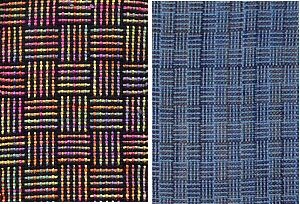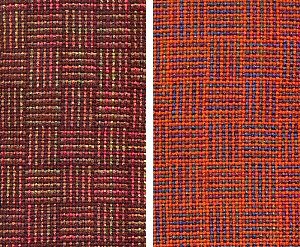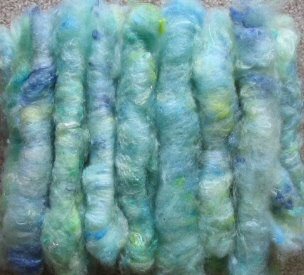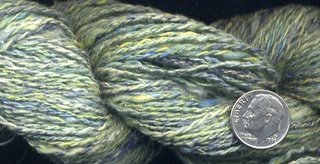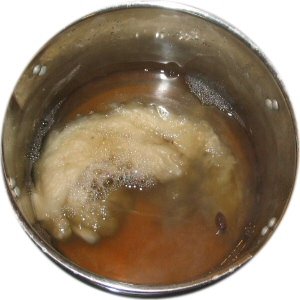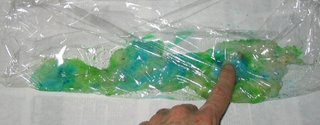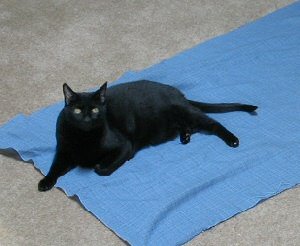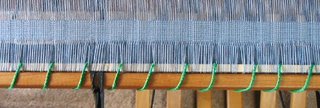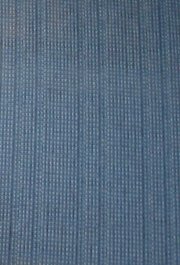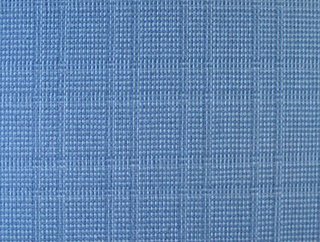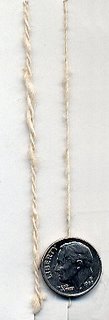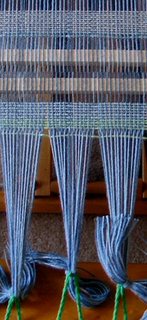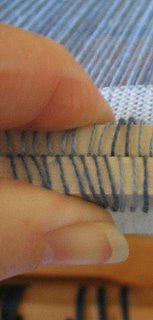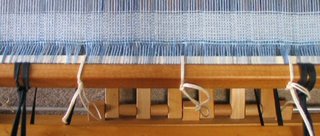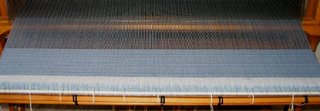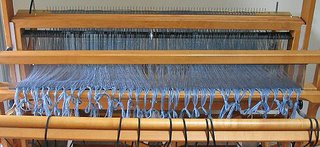Yarns completed so far:
* B2 silk brick
* Mulberry silk noil
* Tussah noil
* Clean noil
* Throwsters waste (and here)
* Silk caps
* Carrier rods
* Alpaca/silk blend
* Bluefaced Leicester/tussah silk blend
Silk samples yet to be spun:
* Silk hankies
* A1 silk brick
* Tussah silk sliver
* Merino/silk blend
* Homemade silk caps
* Soy silk
I also still have cocoons to try reeling and noil with which I want to try silk fusion.
What’s currently on the wheel:
This is carded camel down/tussah silk blend. It’s so lovely that it practically spins itself. I would love to have more than an ounce of this stuff! It’s absolutely begging to be put to some knitting needles.
Also, because I have had so many encouraging comments (both public and private) about my various silk photos, I’ve put them in an album on Flickr. You can find the link on my sidebar as Leigh’s Silk Photos. I’ve included my pix of the process of making and working with silk caps, dyeing and spinning throwsters waste, and working with the carrier rods. I added a few extra photos to these categories to better explain the steps of each process.
So as you can see, I'm making good progress on my silk samples. I'm learning a lot and will have a lot of lovely sample yarns to have fun with.
Also, because I have had so many encouraging comments (both public and private) about my various silk photos, I’ve put them in an album on Flickr. You can find the link on my sidebar as Leigh’s Silk Photos. I’ve included my pix of the process of making and working with silk caps, dyeing and spinning throwsters waste, and working with the carrier rods. I added a few extra photos to these categories to better explain the steps of each process.
So as you can see, I'm making good progress on my silk samples. I'm learning a lot and will have a lot of lovely sample yarns to have fun with.









